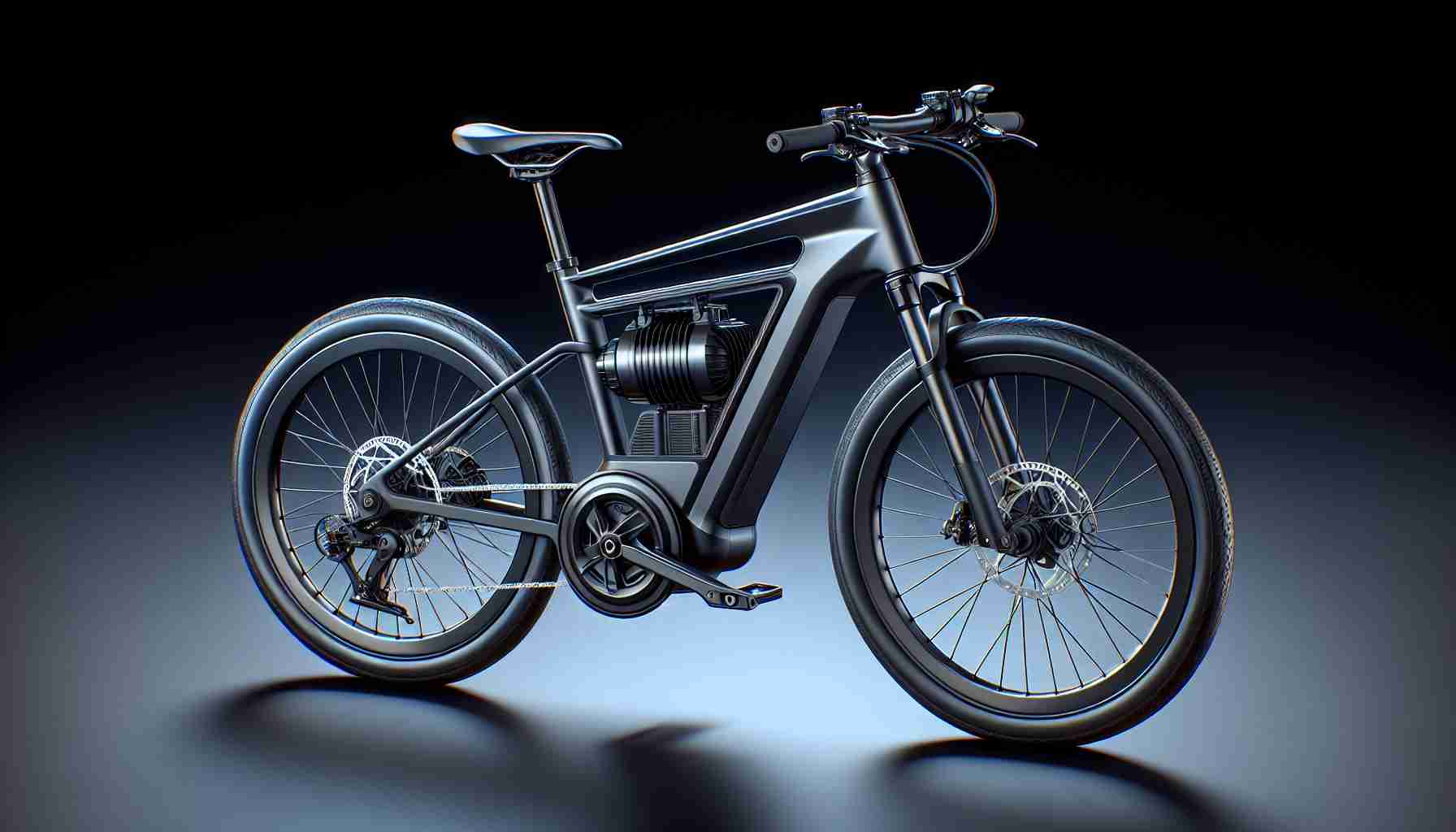DJI, a prominent drone manufacturer, is now entering the world of electric bikes and motors. The company has introduced its own electric bike drive system, known as the Avinox Drive System, along with its standalone e-bike brand called Amflow.
The Avinox Drive System boasts impressive specifications, including 850W peak power and 108Nm of torque. Despite its power, the system weighs just 2.52kg, making it lightweight and efficient. In addition to the drive system, DJI has also launched the Amflow electric mountain bikes. These bikes, available in two models, weigh around 19.2kg even with a 600Wh battery, providing a lightweight option for powerful mid-drive eMTBs.
Find out more about DJI’s motor and the Amflow e-bikes here.
ZF Introduces Compact E-Bike Motor as Small as a Coke Can
At the Eurobike event, ZF unveiled its Centrix mid-drive unit, which offers powerful performance in a uniquely compact size. Weighing just 2.5kg, the motor has installation dimensions of 88mm x 118mm, comparable to a small drinks can. Despite its small size, the Centrix motor delivers 90Nm of torque.
The Centrix motor is available in two versions: the Centrix 90, offering 90Nm of torque and a maximum output of 600W, and the Centrix 75, with 75Nm of torque and a maximum output of 450W. Designed for various applications, the Centrix 90 is suitable for mountain, SUV, or trekking e-bikes, while the Centrix 75 is ideal for commuter, urban, or gravel electric bikes.
What sets the ZF motor apart is its open Bike Eco System, allowing manufacturers to have more flexibility in choosing additional components. The first bike manufacturer to utilize the Centrix motor is Raymon Bicycles, which incorporated it into their Tarok full-suspension electric mountain bike.
BH Bikes Collaborates with SEG Automotive to Create Lightweight E-Bike Motor
BH Bikes has partnered with automotive parts manufacturer SEG to develop the BHZ by SEG motor. Weighing just 2.1kg, this mid-drive motor offers impressive specifications, including up to 65Nm of torque and a peak power of 500W.
The BHZ motor focuses on cadence and utilizes torque, speed, and cadence sensors to provide optimized assistance levels. With 1,000 readings per second, the motor accurately determines the power delivery required based on the rider’s effort. Additionally, BH has implemented an immediate cut-off when the rider stops pedaling, along with progressive assistance cut-off once the 15.5mph assistance limit is reached.
The motor is accompanied by a 630Wh battery, weighing 2.6kg, conveniently located in the bike’s downtube. For extended range, a 180Wh range extender can be added without the need for additional cables. The motor’s assistance levels can be easily controlled through an iRemote controller, which connects to a Garmin computer for expanded ride data. BH also offers an app, iConnectz, for customization of motor assistance modes.
BH has already incorporated the BHZ motor into their iLynx Trail and iLynx Race Carbon electric mountain bikes, providing riders with a range of options to choose from.
Discover the Best Electric Mountain Bikes for 2024.
DJI’s entry into the electric bike market with the Avinox Drive System and Amflow e-bikes is indicative of the growing popularity and demand for electric bikes. The electric bike industry has been experiencing significant growth in recent years, driven by increasing environmental concerns and the desire for a more sustainable mode of transportation.
According to market forecasts, the global electric bike market is expected to reach a value of USD 38.6 billion by 2025, growing at a CAGR of 7.9% from 2020 to 2025. This growth is attributed to factors such as government initiatives promoting electric mobility, rising fuel costs, and advancements in battery technology.
One of the key issues related to the electric bike industry is the need for charging infrastructure. As the popularity of electric bikes increases, there is a growing demand for charging stations to support the charging needs of e-bike users. This presents an opportunity for companies to invest in developing a robust charging infrastructure to support the growing electric bike market.
Another challenge faced by the industry is the need for standardized regulations and policies. Different regions and countries have varying regulations and policies regarding electric bikes, including speed limits, licensing requirements, and safety standards. Having standardized regulations can help facilitate the growth of the industry and ensure the safety of e-bike users.
With companies like DJI, ZF, and BH Bikes entering the market with innovative and lightweight electric bike motors, there is a continuous focus on improving the performance and efficiency of e-bikes. These advancements in motor technology allow for more powerful and lightweight e-bikes, giving riders a better experience and increasing the adoption of electric bikes.
As the electric bike industry continues to evolve, it is expected that there will be further advancements in battery technology, motor efficiency, and overall design of e-bikes. This will drive the market forward, making electric bikes a viable and sustainable mode of transportation for the future.
For more information on the electric bike industry and market forecasts, you can visit MarketsandMarkets.
The article has been updated: 2024-11-02 07:06
Here are some suggested related links for your post title:
1. DJI – The official website of DJI, the drone manufacturer known for its innovative technology and products in aerial photography and videography.
2. Electrek – A website focused on electric vehicles and sustainable transport, providing news and insights on innovations in the e-bike and electric vehicle sectors.
3. Bike Business – A resource for news and trends in the cycling industry, covering e-bikes and technology advancements in cycling.
4. Electronic Design – A publication that provides insights into electronics design and engineering, often featuring stories about new technologies like e-bike motors.
5. Bicycling – A leading magazine and website dedicated to all things cycling, including reviews and news about electric bikes and their components.
6. The Verge – A technology news website that covers the intersection of technology, science, art, and culture, often discussing new innovations from companies like DJI and their ventures into different markets.
7. Road Bike Rider – A site offering tips, advice, and reviews for road cycling, including electric bikes and their growing popularity among cyclists.
8. Gear Patrol – A lifestyle publication that covers gear, technology, and cars, often featuring articles about e-bikes and advancements in personal transportation.
9. TechCrunch – A leading technology media property, providing news and analysis on tech companies and product launches, including advancements in e-bikes and electric motors.
10. Forbes – A global media company that incorporates news and insights on business and technology, including articles about innovative companies like DJI and their product expansions into the e-bike market.
The article has been updated: 2024-11-03 16:08
What motivated DJI to venture into the e-bike motors and electric bike market?
DJI’s decision to enter the e-bike motors and electric bike market stems from its desire to diversify its product offerings and leverage its expertise in precision engineering and technology. By applying its innovative approach and knowledge gained from drone manufacturing, DJI aims to create high-performance e-bike components that enhance efficiency, usability, and overall riding experience. Additionally, the growing popularity of electric bikes and the increasing demand for sustainable transportation solutions played a significant role in driving this expansion into the e-mobility sector.







